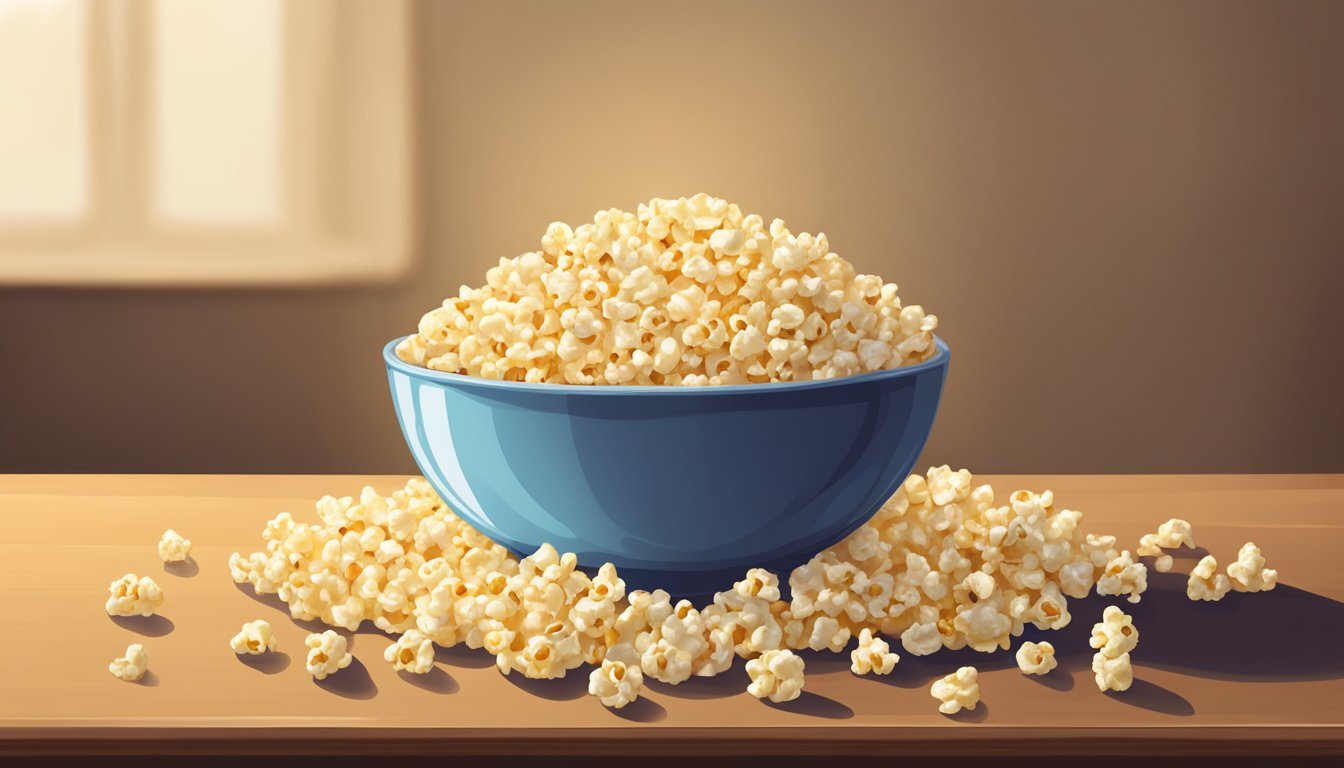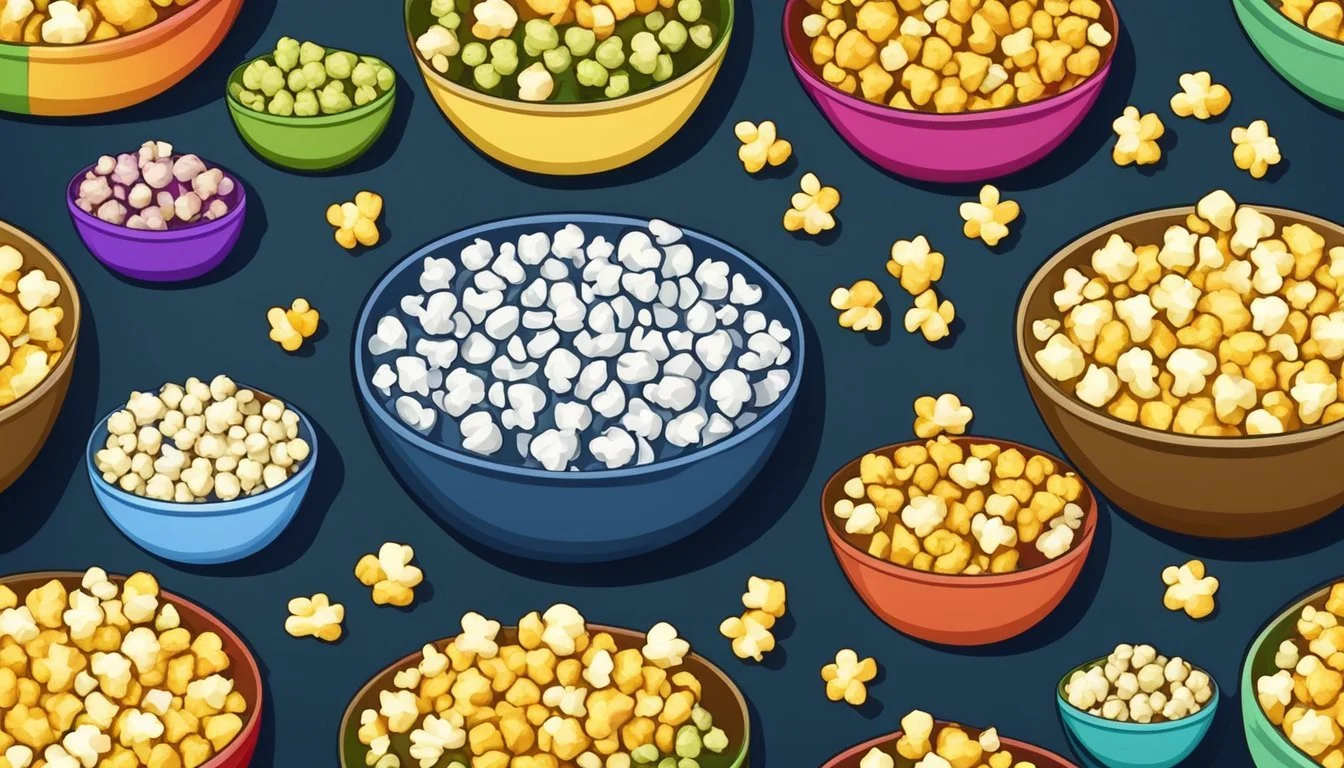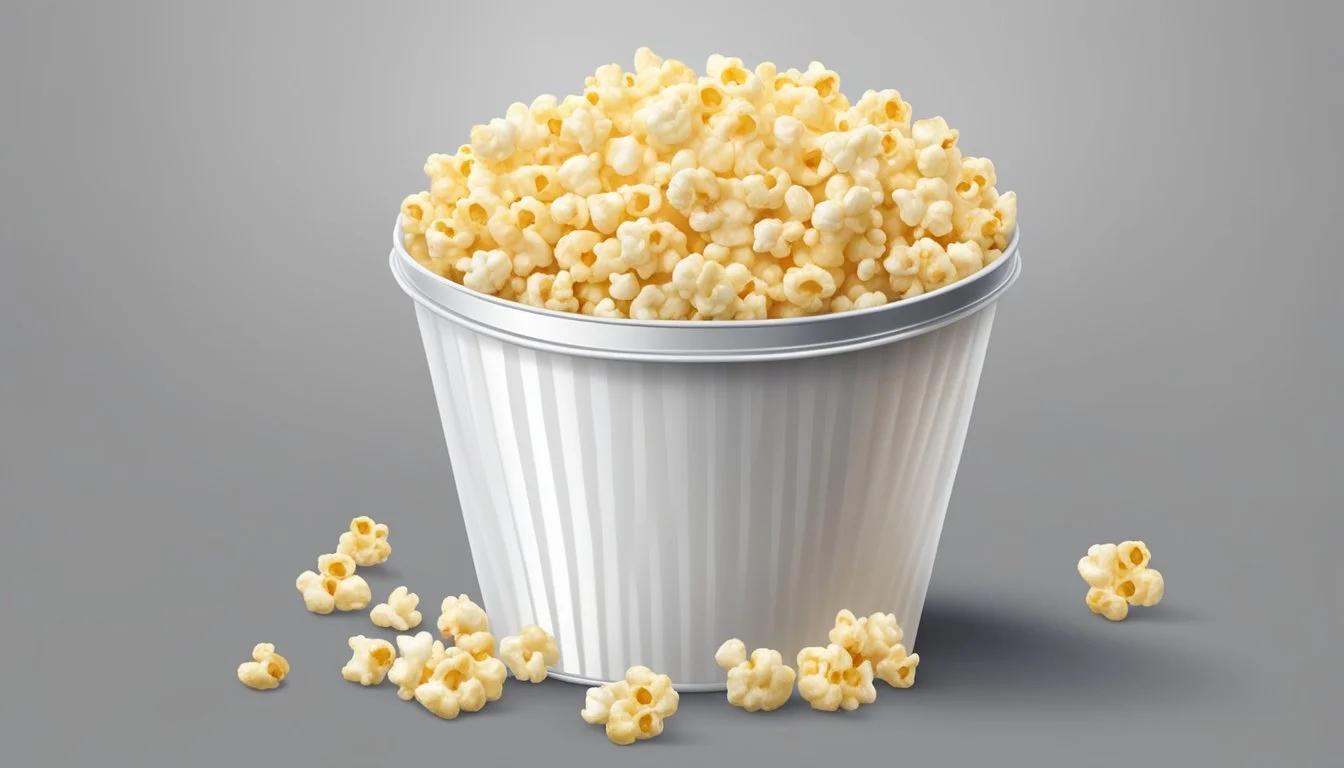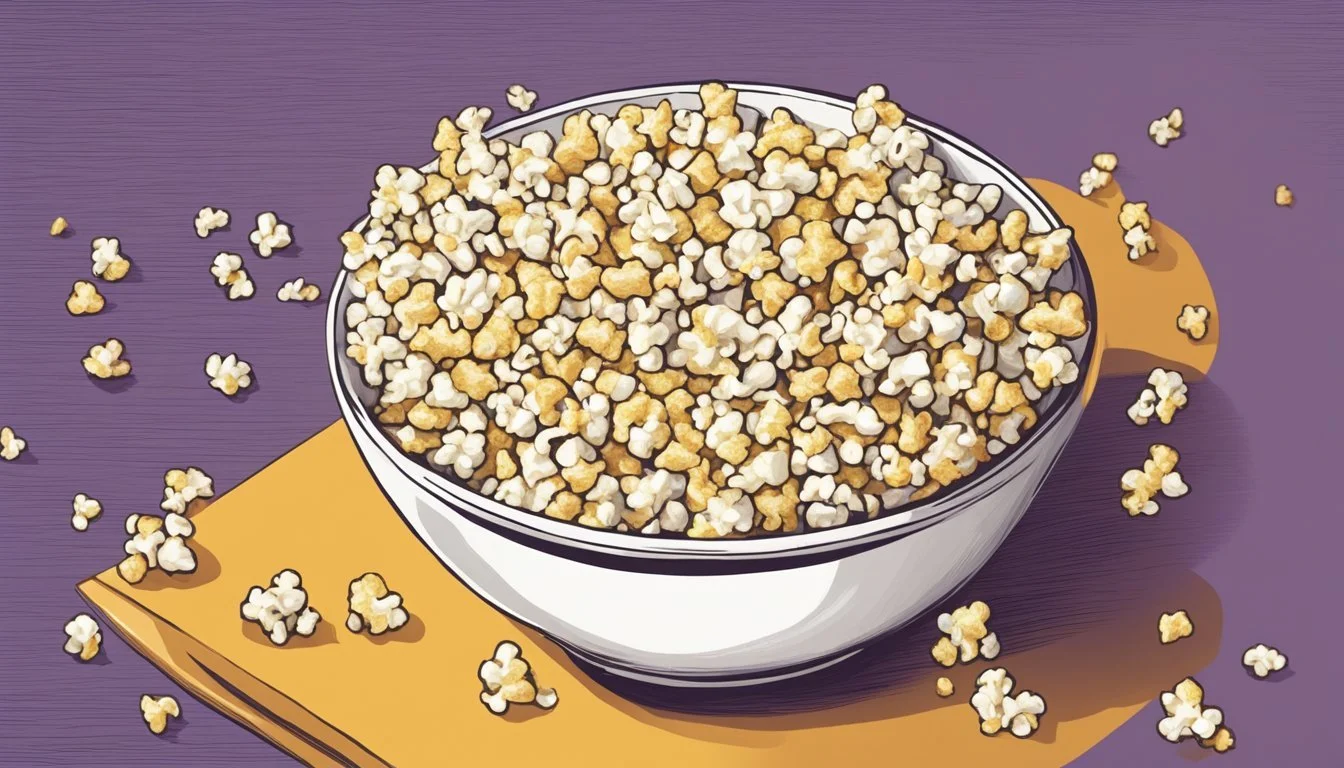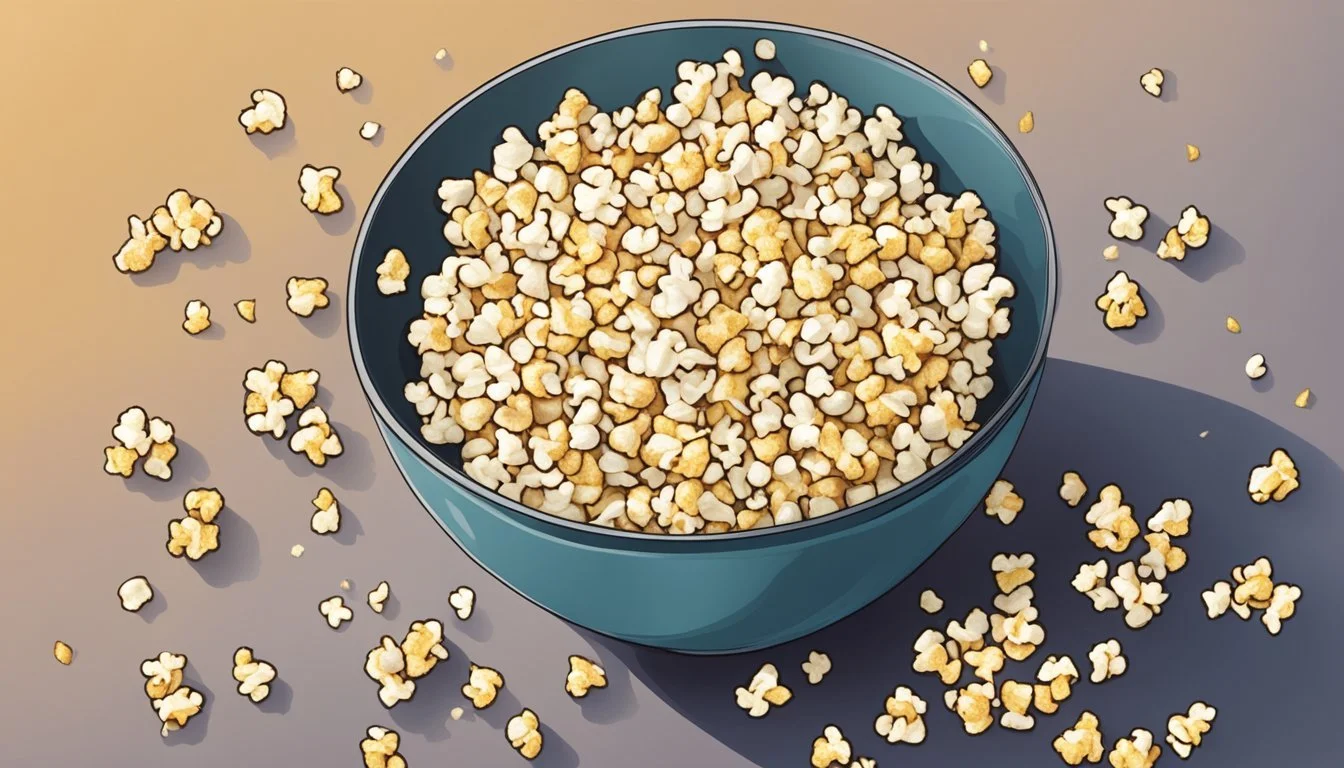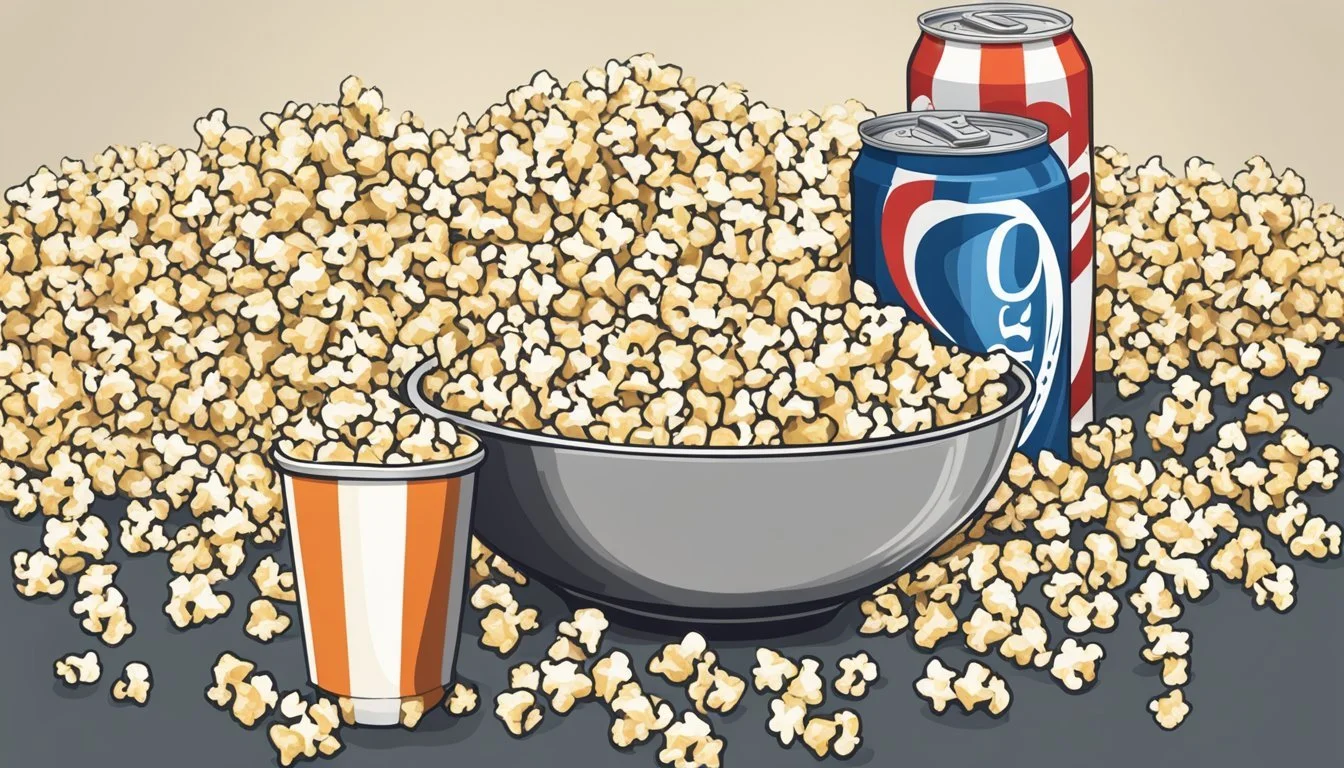Does Popcorn Go Bad?
Understanding Shelf Life and Storage Tips
Popcorn is a beloved snack enjoyed by millions for its delightful crunch and versatility in flavoring. From a culinary standpoint, popcorn is considered a whole grain and is made by heating dried corn kernels until they pop. The shelf life of popcorn is of interest to many, because while it's commonly perceived as a non-perishable snack, it can indeed lose its quality over time.
The longevity of popcorn differs depending on its form, be it un-popped kernels, microwaveable packets, or ready-to-eat popped popcorn. Dry kernels have a longer shelf life, lasting up to 1 to 2 years past the production date when stored correctly in a pantry. Their lifespan can even extend an additional 6 months beyond their best-by date. On the other hand, the shelf life of ready-to-eat popcorn is notably shorter due to its exposure to air and moisture which can lead to staleness.
Microwave popcorn comes with a varying shelf life due to its airtight packaging, which can extend its usability up to 8 months when left unopened. Once popcorn is opened or popped, it's best consumed fresh, ideally within 1 to 2 weeks, to maintain its texture and flavor. It's crucial to be mindful of the signs of spoilage, such as an off smell or discoloration, and to store popcorn properly in a cool, dark place to maximize its shelf life.
Understanding Popcorn and Its Components
Popcorn is a type of maize with a hard hull that traps moisture inside the kernel. When heated, the moisture turns into steam, pressurizes, and eventually turns the kernel inside out, creating the familiar popcorn puff.
Popcorn Kernels and Their Storage
Popcorn begins as dried kernels which are the seeds of the popcorn plant encased in a tough outer hull. It is the presence of this hull that makes popcorn capable of popping. Storage conditions are critical for maintaining the quality of popcorn kernels. They must be kept in a cool, dark place to prevent moisture loss. The ideal moisture content for kernels to pop is between 13.5% and 14%; below this level, the likelihood of unpopped kernels increases.
Proper Storage Tips:
Temperature: Store at room temperature or below.
Environment: A dry, dark environment such as a pantry prevents sunlight from affecting the quality.
Containers: An airtight container keeps out moisture and pests.
Avoid: Do not store near ovens or stovetops, as heat can ruin popcorn's poppability.
By adhering to these storage principles, one can ensure that the popcorn retains its quality and extends its shelf life, reducing waste and guaranteeing an enjoyable snack time when one decides to indulge.
Shelf Life of Popcorn
Popcorn's shelf life varies depending on several factors and proper storage is essential to preserving its quality. Understanding the role of moisture and the significance of dates provided by manufacturers can help ensure maximum freshness.
Factors Influencing Popcorn Shelf Life
Type of Popcorn:
Unpopped Kernels: Generally, they can last between 1 to 2 years when stored in a cool, dry place. Their moisture content needs to be maintained for them to pop effectively.
Microwave Popcorn: This type usually stays fresh for up to 8 months if unopened, thanks to its airtight packaging that blocks light and moisture.
Popped Popcorn: Once popped, it is advised to consume within 1 to 2 weeks for optimal taste.
Storage Conditions:
Airtight Containers: Maintain quality by preventing moisture and oxygen from affecting the popcorn.
Temperature and Humidity: Keeping popcorn in a cool and dry environment prolongs its shelf life.
Expiration Date and Food Safety
Significance of Dates:
Best-by Date: This indicates when the popcorn will be at its peak quality. It is not an expiration date, and popcorn is usually still safe to consume past this date.
Use By Date: Seldom seen for popcorn, but if present, it is the last date recommended for use while at peak quality.
Assessment of Quality:
Visual and Smell Checks: Look for signs of moisture or an off smell to determine if the popcorn has been compromised.
Taste Test: Slightly stale popcorn is typically safe to consume, but it might not taste as fresh.
Food Safety:
There is a low risk of foodborne illnesses from expired popcorn, but the quality will degrade over time.
Popcorn that shows changes in color, texture, or has a bad odor should not be consumed.
Signs of Bad Popcorn
When popcorn goes bad, it exhibits several clear signs. One's senses are often the first to alert them to popcorn that is past its prime, with changes in taste, texture, and smell being telltale indicators.
Texture, Taste, and Smell Indicators
Texture: Fresh popcorn is known for its crisp and airy texture. If the texture has become chewy or tough, it likely indicates that the popcorn is stale. Taste: A fresh popcorn should have a pleasant, slightly nutty flavor. A rancid taste or a noticeable lack of flavor suggests the popcorn is no longer good to eat. Smell: Any odors that are musty or stale are clear warnings that the popcorn has gone bad.
Visible Signs of Spoilage
Discoloration: Look for any changes in the kernel's color, such as dark spots, which may signify mold growth. Mold: If there is visible mold on any of the kernels or within the bag, the popcorn should be discarded immediately. Mold indicates severe spoilage and can be harmful if ingested.
Proper Storage Solutions
Ensuring popcorn retains its quality involves proper storage solutions that can significantly extend its shelf life. This section will provide specific guidelines on how to store unpopped and popped popcorn effectively.
Storing Unpopped Popcorn
Unpopped popcorn kernels should be kept in an airtight container to protect them from moisture, which can lead to spoilage. It is optimal to store these kernels in a cool, dry place such as a pantry. For those looking to preserve their popcorn's freshness for an extended period, here are specific storage conditions to follow:
Pantry Storage: Keep the airtight container in a pantry away from heat and light sources to avoid moisture accumulation.
Refrigeration: Not recommended as the potential for moisture increase could be detrimental.
Freezing: An option for long-term storage, though kernels must be completely dry before freezing to prevent ice crystal formation.
The anticipated shelf life of properly stored unpopped popcorn is approximately 1 to 2 years. The kernels may be consumable beyond that time, but one might notice a decrease in the pop rate.
Storing Popped Popcorn
Once popcorn has been popped, its shelf life is reduced, and it is vulnerable to becoming stale. To maximize freshness, follow these guidelines:
Immediate Consumption: Popped popcorn is best enjoyed immediately, but it can be stored for short periods if necessary.
Short-Term Storage: Place in an airtight container and store in a pantry for up to 1 to 2 weeks.
Refrigeration/Freezing: Generally not recommended for popped popcorn as it can introduce moisture and lead to a soggy texture.
By adhering to these storage methods, one can ensure that both unpopped and popped popcorn remains at its peak quality for enjoyment.
Popcorn Preservation Methods
Ensuring popcorn retains its appealing taste and texture involves proper storage and handling. This section explores reliable strategies to maintain the freshness of popcorn and how to best reheat and consume leftovers.
Extending the Freshness of Popcorn
To keep popcorn fresh, proper storage in a cool, dark place is crucial. One should transfer unpopped kernels and opened bags of popcorn to airtight containers to protect them from moisture and air, both of which can cause the popcorn to become stale. For dry popcorn kernels, their freshness can extend well beyond the best by date, usually up to 1 to 2 years if stored correctly.
Environment Suggested Storage Method Pantry Sealed container away from light and moisture Refrigerator Not recommended Freezer Possible but not necessary for dry kernels
Note: Storing popped popcorn in airtight containers or resealable bags can significantly delay the time it takes for the popcorn to become stale.
Reheating and Consuming Leftovers
They must take care when reheating leftover popcorn to avoid spoilage and to restore its desirable qualities. Leftover popcorn is best consumed within 1 to 2 weeks of popping for optimal taste and quality. To reheat, one can spread the popcorn on a baking sheet in a thin layer and warm it in an oven at a low temperature for a few minutes, checking frequently to ensure it does not burn.
Reheating Method Instruction Oven 250°F (120°C) for a few minutes Microwave Short intervals of 10-15 seconds, shaking in between Stovetop (Skillet) Not recommended
Caution: When reheating, one must monitor closely to avoid charring the popcorn, which can impact both taste and safety.
Special Types of Popcorn
When considering the shelf life and care of popcorn, it's essential to distinguish between varieties such as microwave popcorn, and ready-to-eat or gourmet popcorn. Each type has its own storage considerations to maintain freshness and flavor.
Microwave Popcorn Considerations
Microwave popcorn typically has a shelf life of 6-8 months when unopened. The preservatives within the packaging help prolong its freshness until the package is opened. After opening, any unused portions should be consumed promptly, ideally within a few weeks, to enjoy optimal taste and texture. It's important to store microwave popcorn in a cool, dark place. Heat and light can degrade the oils and seasonings, potentially leading to a rancid taste.
Ready-To-Eat and Gourmet Popcorn Care
Ready-to-eat popcorn comes in various flavors and often includes gourmet toppings or seasoning. To retain its crispness, ready-to-eat popcorn should be stored in an airtight container to keep out moisture and consumed within 2 to 3 months of sealing. Similarly, gourmet popcorn with added flavors or toppings should also be consumed while fresh to maintain its intended high-quality flavor. Both varieties are sensitive to moisture and can quickly become stale when exposed to air, so proper sealing is crucial.
Flavored popcorn, which may come with gourmet seasonings, is particularly prone to losing its peak taste if not stored correctly. One should avoid high-humidity environments and ensure the packaging is sealed properly after each use.
Health and Safety Concerns
When considering the health and safety concerns associated with popcorn, it is important to understand the risks tied to consuming popcorn that may be past its prime. The primary focus is on ensuring the product does not compromise food safety and the well-being of the consumers.
Risks of Consuming Expired Popcorn
Expired popcorn, particularly if it shows signs of spoilage such as a rancid smell or presence of mold, should be discarded immediately. Consuming spoiled popcorn can lead to digestive issues which may include symptoms like nausea, vomiting, or diarrhea. While dry popcorn kernels have a long shelf life and often remain safe past their expiration date, their quality might diminish, resulting in a higher percentage of unpopped kernels.
The safety of popcorn also extends beyond the kernels themselves to include concerns about additives like butter and oils that can turn rancid. These spoiled fats pose safety risks and should not be consumed. Inhaling the fumes from microwaved popcorn that contains artificial butter flavoring has been linked to respiratory problems in factory workers, though the risk to consumers is considered to be much lower.
Consumers should ensure they follow food safety standards by storing popcorn in a cool, dry environment to prevent moisture, which is critical for preventing mold growth and maintaining the popcorn's ability to pop. If the popcorn is pre-packed with added fats, it is crucial to adhere to the best-by dates to guarantee safety.
Frequently Asked Questions
When discussing the longevity of popcorn, consumers often have concerns regarding proper storage techniques and the telltale signs of expiration. This section addresses these queries to ensure both safety and optimal enjoyment.
Best Practices and Common Concerns
How should popcorn be stored for maximum freshness?
Popcorn's shelf life can be extended significantly through proper storage. It's recommended to store unopened bags of popcorn in a cool, dry environment. Once opened, placing the popcorn in an airtight container can help maintain its freshness. For popcorn kernels, airtight storage in a cool, dry place can preserve their quality indefinitely.
What are 'old maids' in popcorn?
'Old maids' are kernels that fail to pop. This can be due to a lack of moisture in the kernels, which is necessary for popping. Ensuring an optimal storage environment reduces the chances of ending up with old maids in your popcorn.
Do popcorn tins affect shelf life?
Popcorn tins can be an effective way to store popped popcorn, protecting it from moisture and pests, thus potentially extending its shelf life.
How can I tell if popcorn oil has gone bad?
If popcorn oil has an off smell, appears cloudy, or has changed in texture, it should not be used. These are all signs that the oil has gone bad and could negatively affect the taste and safety of the popcorn.
Is it safe to eat popcorn after its expiration date?
Popcorn, like many other grains, usually carries a 'best before date' which is not the same as an expiration date. In most cases, it can still be safe to consume after this date, but it is vital to check for signs of spoilage, such as changes in smell, taste, and texture.
FAQs about Expiration Dates:
Dry popcorn kernels: 1 to 2 years past production date
Microwave Popcorn: 6-8 months unopened
Popped Popcorn: Best within 2-3 weeks
What are the signs of spoiled popcorn?
Signs of spoiled popcorn may include a stale odor, a change in color, or the presence of mold. Any popcorn exhibiting these signs should not be consumed.
Can popcorn be included in trail mix?
Popcorn can be a great, lightweight addition to trail mix. To ensure it doesn't become stale or soggy, it should be added close to the time of consumption and the trail mix should be kept in an airtight container.
By adhering to these best practices and being aware of the signs of spoilage, consumers can safely and confidently enjoy popcorn at its best quality.
Additional Information and Tips
This section aims to provide essential considerations for preserving popcorn’s quality and understanding its diverse types.
Understanding Popcorn Varieties and Uses
Popcorn kernels come in various forms, such as plain kernels suitable for air popping, microwaveable packets for convenience, and packaged varieties of commercially popped popcorn often seasoned with flavors like cheese or caramel. The latter typically contain additional oils and seasonings, increasing the calories per serving.
Plain kernels: When stored properly away from humidity, direct sunlight, and excess moisture, these can last longer, typically retaining the ability to pop for months. They should ideally pop with a moisture content of 13.5% to 14% to ensure the best popping quality.
Microwaveable popcorn: These pre-packaged microwaveable packets include oils and flavorings. Their shelf life is extended due to airtight packaging, but once opened, they're best consumed within weeks for optimal taste.
Commercially popped: Sealed to protect from contaminants and extend shelf life, once opened, exposure to air can quickly turn these products stale.
In all cases, an individual should store unpopped popcorn kernels in a cool, dry place away from any sources of high heat or moisture, which could spoil the product.
Conclusion
Popcorn has a considerable shelf life but is not immune to going bad. Dry kernels retain their quality the longest; properly stored, they can remain viable for extended periods. Microwaveable varieties and pre-popped popcorn have shorter lifespans. The expected duration before popcorn begins to lose its freshness is a few weeks for microwaveable types to several months for pre-popped ones, provided the packaging is unopened and intact.
To maintain popcorn's edibility and quality:
Storage: Keep popcorn in a cool, dark place away from moisture.
Sealing: After opening, reseal tightly to protect it from air and moisture.
When assessing if popcorn has gone stale:
Sniff for off-odors.
Look for discoloration.
Listen for a dull sound when shaking the kernels; this can indicate a loss of moisture.
Test-pop a small amount; poor popping performance signifies degradation.
Finally, while stale popcorn may not pose a health risk, the decline in texture and flavor reduces its appeal. It's best enjoyed while fresh to experience its optimal taste.

